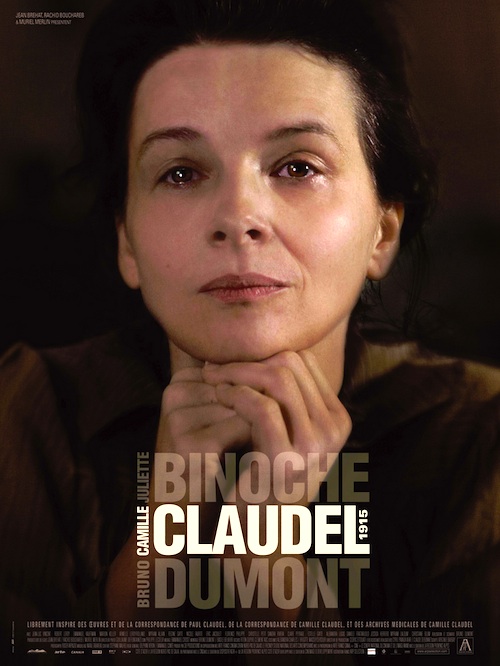By Joe Bendel. Camille Claudel is a woman of extraordinary associations. She was the sister of playwright Paul Claudel, the mistress of Auguste Rodin, and was once erroneously thought to be the lover of Claude Debussy. In the cinema, she has been played by Isabelle Adjani and now Juliette Binoche, but in reality, she led a deeply troubled life. Bruno Dumont picks up with Claudel two years after her family institutionalized the sculptor, dramatizing three anesthetizing days leading up to her brother’s visit in Camille Claudel 1915, which opens this Wednesday at Film Forum.
Her brother blames the artistic temperament and perhaps he is right. Regardless, his sister clearly suffers from paranoia and a persecution complex. Unfortunately, her commitment rather vindicates the latter. Since she is convinced her food is constantly poisoned by her multitude of enemies, Claudel has special dispensation to cook her own meals. Given her mostly calm demeanor, the sisters give her relatively free reign at Ville Evrard and even recruit her reluctant help with more quarrelsome patients. Nevertheless, if you ask her about her situation you will get an earful.
 1915 is easily Dumont’s most accessible film in years, but it still bears the hallmarks of his aesthetic severity. If you hum a few bars of anything during the film, you will become the soundtrack. Color is also rather scarce. However, there are plenty of static shots framing Claudel as her spirit slowly ebbs away.
1915 is easily Dumont’s most accessible film in years, but it still bears the hallmarks of his aesthetic severity. If you hum a few bars of anything during the film, you will become the soundtrack. Color is also rather scarce. However, there are plenty of static shots framing Claudel as her spirit slowly ebbs away.
Having previously invited sympathy for the Devil with Hors Satan and suggested all devout Christians are a wink and a nod away from becoming Islamist suicide bombers in Hadewijch, Dumont will not surprise anyone with his unforgiving view of Paul Claudel, the devout Catholic dramatist. He sharply contrasts the ascetic austerity of the writer with the more sensual feeling of the sister. Yet, given his affinity for extremity, the rigidly disciplined Claudel ought to be more in his wheel house.
Jean-Luc Vincent duly plays Frere Paul as the cold, clammy caricature Dumont requires. It hardly matters. He is a distant second fiddle to Binoche’s title character—a role perfectly suited to her strengths. Nobody could better convey the roiling passions submerged beneath her glacial exterior or convincingly erupt in pained outrage when provoked. She is a force to be reckoned with, nearly undermining Dumont’s feminist-victimization narrative. Somehow thanks to Dumont’s powers of persuasion, 1915 was filmed with real nursing home patients playing Claudel’s fellow residents and their nurses playing the nuns, adding further dimensions of authenticity and exploitation into the mix.
Ironically, it is the work of Paul Claudel that is most ripe for re-discovery (as the Black Friars Repertory demonstrated in New York with their Claudel revival project), whereas reproductions of the sculptor’s La Valse are widely available. Regardless, Binoche delivers a remarkable performance in an otherwise flawed film. Best reserved for her loyal admirers and hardcore French art cinema enthusiasts, Camille Claudel 1915 opens this Wednesday (10/16) at Film Forum for all of New York.
LFM GRADE: C+
Posted on October 14th, 2013 at 2:01pm.